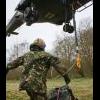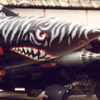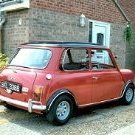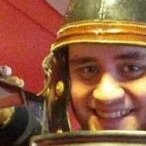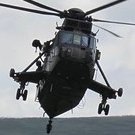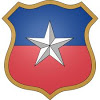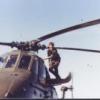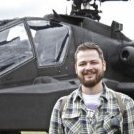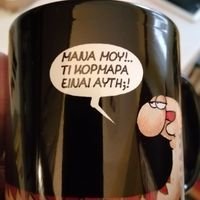Search the Community
Showing results for tags 'REVELL'.
-
It's been a long time since I posted one of my builds but thought I would share this with you, Revell's fairly recent Bf 109G-6 but finished as a G-14. The kit is pretty much as it comes however I did use Alley Cat's excellent upgrade set and an HGW fabric seat harness. The model was finished with my usual blend of Gunze and Tamiya paints. Markings were a mixture of Montex masks and an Eagle Cals decal sheet to represent 'Yellow 4' from 14/JG5 in Norway in the closing months of the war: Thanks for looking, Howard
- 19 replies
-
- 22
-

-
- Bf109G-14JG5
- 1/32
-
(and 2 more)
Tagged with:
-
Hi Everyone, Here is another 2015 build : Revell 1:24 Enzo Ferrari which is part of the Revell Ferrari Set II. This kit has some mesh pieces in the kit, which have to be cut to the correct shape to get them in the kit. Anyway here are the photos of the kit. Updates will follow. Thanks for looking. Rick
-
1/72 ex-Zvezda Su-27SM Flanker coming soon http://www.revell.de/en/products/model-building/aircraft/military-modern/id/04937.html instructions are online: http://www.revell.de/fileadmin/import/images/bau/04937_%23BAU_SUKHOI_SU-27_SM_FLANKER.PDF
-
There are way too many red and yellow Ferrari's about so wanted to do something different. This is the Humbrol violet multi-effect rattle can. Unfortunately my 8mp phone cam doesn't really do the paint effect justice. 20150323_214247_zpskkhxycac.jpg.html][/url] [url=http://s1301.photobucket.com/user/kevhall30975/media/20150328_145109_zpslmhjhyhj.jpg.html]
-
http://www.plastik-modellbau.org/blog/herbstneuheiten-von-revell-septemberoktober-2013/2013/#more-23277 Thanks to modelldoc for posting this link in the rumourmonger section. Regards, Andrew Edit: it says it's a reissue of the old Aer Lingus boxing, which had GE engines, but presumably it will have the PW engine sprue too - as far as I can tell Thai have only had PW and RR engines on their 330s?
-
Certainly not a straight forward build, i had a few problems with the xtracrylix paint and also the aftermarket decals were extremely fragile. Also had problems with the sidewinder mount, i ended up ditching the sidewinders as theyre not that great. Anyway, we got there in the end, so here she is. I knew i would forget to take the masks of the targeting pod! And I noticed on the pics that one of the lights on the gear door had fallen off, luckily i found it on the floor and has now been glued back on. Kit: Revell Scale: 1/48 Type: Tornado IDS Extras used: decals, eduard photoetch cockpit and crew ladder, Hindenburg tanks and Paveway bombs from the old airfix kit. Paints used: Xtracrylix and Tamiya
- 46 replies
-
- 54
-

-
Pure silliness is what this is. I've already got far too many projects on the go. There's my Non-Injection Moulded GB Pucara, my failed Bf110 GB entry that's almost done, and my recently restarted whiffery. So I decided to start another project Revell's 1:72 Sopwith Triplane is ancient - older than me by a long shot. I got one through my cadet squadron (which is named after Collishaw's plane**) and that's where this build will go when it's finished. It'll be pretty much OOTB, and hopefully pretty quick, as I'd like to have it finished by the 24th (this is hard because I build very very, very slowly most of the time) Anyway, I took one look at the pilot, bye bye buster... Bland cockpit (if you can call it that) it is. There's not even a control stick or an instrument panel. I might fix those, but that's it (or maybe not ) Enough waffling about, there's a picture (just one) of my progress. This consists of a lot of base painting, and a bit of hole-filling* in the wings, and a little bit of sticky stuff* on the two parts of the tail. Here it is: The aluminum stuff is going to need another coat. Also, wood-graining on the prop HELP!! How do I do this? Cheers, K *DBL-E score 1 fnarr fnarr **bonus points if you know it
- 18 replies
-
- 1
-

-
Hi Everyone, In memory of Leonard Nimoy, 1931 to 2015. Here is the 3rd of my 4 submissions for this group build, the Revell 1:500 scale USS Enterprise NCC-1701 from Star Trek Into Darkness. Here is the box art : Kit details : - Skill Level 3 - 91 parts - Newly developed construction kit - Large scale, two-piece Saucer Section - Separate command bridge - Multi-part deflector and sensor - Large-scale, two-piece secondary hull - Multi-part nacelles with separate pylons - Many transparent parts, including Bussard collectors and navigation lights - Display stand - Kit suitable for the addition of lighting (equipment not included) - Detailed instructions with tips for painting - Extensive set of decals for the Enterprise Sprue shots Before I stopped all work on this kit, I primed the entire kit, started the painting of it and completed the display stand including painting. Here is the picture f the completed display stand. Because of a mishap with the painting of the kit (see below), I will be stripping the kit back (fairy power spray) and starting all over again. Look for more when the build actually starts. Cheers, Rick
- 70 replies
-
- 2
-

-
Hi Folks, I hope I'll have enough modelling mojo to finish this one and to get back to the Shackleton. Soooo... I bought that one second hand, and got in the box a Revell kit with resin intakes I strongly suspect are a quite illicit copy of aftermarket ones. Being honest only to a point, I decided to use them anyway. I bought Aires cockpit and as I wanted to do an Air Defence Phantom, I bought Airdoc RAFG Phantom decal sheet. And so it went. The cockpit, painted Gunze H306 and black, with white pen to highlight the buttons and switches and whatnot. I painted the radar screens clear red. I was a bit over-enthusiastic removing stuff from the cockpit sills before integrating the cockpit. Too bad... The lower part of the wing had a stong view about the resin intakes. I had to pacify it using methods I'm not quite proud of: And the kit fought back: The upper parts of the wings are glued: And it's putty time! The cockpit sill was treated with Milliput. Love that stuff, BTW... And after some sanding, reputtying, resanding, painting just for a check and starting it all over again: Nose is painted black, the windshield got a thin coat of clear blue before everything was masked and glued on: There goes the Dark Sea Gray: And it's camouflage time. I made each green part separately: I put kabuki tape on the model, traced the contours on it, then put it on a pad and cut the contour before re-applying the tape to the model: It's a bit long... And now we're done: Before painting the butt, I masked its surroundings: Then, after spraying some Gunze Super Titanium, I removed the masks and said things that should give me a karma low enough to thing coming back as a dung beetle wouldn't be so bad after all. Starting to look like a Phantom, isn't it? For reason I prefer to stay unknown, I first painted the belly Medium Sea Gray. Then I had a brainwave and did it all over again in Light Aircraft Gray: A first attempt at airbrush weathering later: It's weapon time: I don't like code decals with separate individual letters. Really. 92th Sqn markings are on: And now for the bazillion stencils. Oh, one thing interesting to know... When you wipe the wash away, it is of capital importance to use the right solvent to put on the cloth/paper/cat you're wiping the wash with. Top tip of the week: celluloid thinner is NOT the right solvent. Back to the paintshop: And once the wash has been done: Some more airbrush weathering later, I sprayed some Alclad semi-gloss coat and removed the masks from the windscreen and went very naughty again (paint had seeped under the masks)... Now, I'll have to install all these: Next step: the nozzles, some more weathering in the jest exhaust area, and a beer or twelve. Cheers, Sebastien
- 18 replies
-
- 5
-

-
Right gang, having built a number of the Revell 72nd scale Hawker Hunter kit this year I find myself starting off 2015 with the promise of more, this GB - not to mention the generosity of its creator Cliff - gives me the chance to model a Hunter F.52 used by Peru. Starting point will be the F.6 kit and a set of suitable roundels Cliff gave me. The F.52 was basically a Mk.4 so the usual backdating will need to be done again as it was on my Swedish example. Will try to get some photos taken later in what passes for daylight at this time of year.
-
After I had finished the Revell Cobra I went on the look-out for another Cobra kit for a road version. Whilst searching the interweb, I also came across this kit which, apparently, would compliment the racing Cobra. The supplied decals are for an 'Archway Ford' sponsored car. Tried googling Archway Ford but could not find anything relating to Cobra or Mustang entries. Perhaps Revell just made these decals up then? Painted with the remainder of a can of Tamiya pearl blue. Added some extra wiring in the engine bay and changed the headlights for aftermarket. A trip to Silverstone classic at the weekend provided some good reference opportunities, I noticed the rear screen has support tubes along the top so these were added to the build. As usual with an old Revell kit, most of the work was refining the parts and removing flash and ejector pin divots. Door handles were replaced with chrome metal items from the spares box and the underbonnet heat reflector is cigarette packet foil. Last items to go on were P/E bonnet catches. Thanks for looking. All the best, Steve.
- 31 replies
-
- 13
-

-
I have a sneaking suspicion there's going to be a few of these, but here's the start of mine (eek) it's also my first WIP that I intend to finish. I'll forgo the usual sprue shots and instead point you all to this thread. The intention is to do it in the flight test scheme even though I swore off orange paint after the Belgian F-16. First up the seats both before and after: Once the paints dried fully I need to touch up a few areas then give it some weathering. Thanks for looking....... until next time
-
Hi friends here are some pictures of my Panzerkampfwagen VI Tiger II Ausf. B in 1/72 scale. This kit was done early this year. The photos were taken last weekend, i hope you like it. It was done before i started to use PE parts, may this one will have some upgrades at some time, like the Challenger, the Revell Tiger is a pleasure to build.
- 41 replies
-
- 14
-

-
Hello All, As in the title I am still not too sure what to make for this one as I have a few options. I will list them below and see what everyone thinks. I love the paint work some of the RSAF's aircraft have, I will try to replicate it to the best of my abilities in 1/144! Yay! Onto the first candiate. The first one, and the one I am leaning the most to is the Hawk. Not the display team The Saudi Hawks (Wiki link) but an actual training aircraft. Altho the Saudi Hawks is also an option, the bottom one is an Hawk from Oman. I am also going to build that one at the same time... possibly. I will be using the Retrowings/OZ Models 1/144 kit. Got this kit a little while ago, been looking forward to building it. This is my second option, but I will be going it the camo scheme, NMF doesn't appeal to me for some reason. I just noticed that there is a MiG-21 in the top of the picture... Go have him Lightning! I got this kit as part of a "job lot" on ebay with 5 other models. I put a £20 in max bid for the lot and won. So I got this classic for £3.30-ish and it was still sealed! How cool is that?! The other options I haven't shown because either I dont have the kit yet, or could find the kit. My other options are a Tornado GR.1/4 OR F.3. Then I could always do an E-3A, but the decals would be bothersome. Then I noticed literally 5 minutes ago that I could do a Hawker Hunter, which I have lots of PE/Resin for... all in 1/144 too! I just got to find the kit first.. :/ Thus far I am leaning towards the Hawk... not decided. I will decide next year Kind Regards, Dazz
- 25 replies
-
- 2
-

-
- Saudi Arabia
- RSAF
-
(and 5 more)
Tagged with:
-
Hello everyone, Haven't posted anything in a while, due to 'technical difficulties' , but here's my latest completion, it's a but rough in a few places and the Shuttle was being a pain because it wouldn't stick to the 747, but I got there eventually. Thanks for looking, Ryan
- 10 replies
-
- 19
-

-
Bonjour mes amis! My first thoughts when asked about La Belle France aren't wingy things (although I thought about a Rafale) or tracky things (although I thought about a Le Clerc). No the first thing I think of is food (and the second thing is wine!). What could be more French than a bread van? (I did briefly contemplate doll's house scale baguettes, maybe later, if we get hungry!) But a bread van on its own would be a bit, well, plain, ne serait-il pas? So I thought it ought to have some company. (Plus at first I couldn't find the Tamiya/Ebbro 2cv van I originally thought of). My LHS had an Ebbro Renault 4 on its shelves, and the R4 was the most produced French car ever, so that fell into my hands. Then some googling showed me they did a van version (chapeau Bengalensis of this parish) and then that the Revell 2cv seemed to be highly regarded. So one of each of those was obtained. But wait, the van sold in the UK doesn't come with the iconic La Poste and Renault Service decals? Pah, then my friends we must order one direct from France, bien sûr. Cherbourg Maquettes did the honours, and helpfully confirmed by email that the desired decals were in the box. Googling to find a French supplier told me that Heller were about to release a hard top R4L with Police markings. More googling suggests this may be a tie in with Ebbro, who haven’t released a hard top but have tooled one, which is available as a spare part. So back onto the internet, and a pre-order has been placed with Heller. Alas, it hasn’t arrived yet, although my card has been charged, so I’m impatiently hopeful. (Those with a memory for French films of the 1980s will perhaps recall that a little blue police car has a brief cameo in Betty Blue). So here’s the cast for this little experience. I’ve never built a car kit before, so be gentle! Pain quotidian by jongwinnett, on Flickr
-
Hi everyone! Here is my Eurofighter Typhoon (Revell 1/72 kit), built completely OOB. Overall it's a nice kit, though clearly not as good in terms of quality as other kits from Hasegawa or Academy. I hope you like it! Best, Ricardo Bonus: bottom detail
- 14 replies
-
- 18
-

-
- eurofighter
- typhoon
-
(and 3 more)
Tagged with:
-
Hi, this may be madness or over stepping the boundaries of common sense but here goes, I do have 20 days left to the close of the STGB. I have finished my two weeks off so its back on duty in the Shetland isles and whilst packing I thought I'd take a OOB Revell SH-3 and add the Eduard interior and exterior sets to boot. 14 days should see me to a primed fuselage with most the subs done. It may be the 'Bridge to far' but I have to do something whilst I'm off duty apart from take in the scenery if the weather holds. I've always liked the US Navy High Viz schemes of the late 70's/80's and this will add a nice addition to my Sea King collection and keep me out of the pub. Cheers the Woo
-
Evening, all. I haven't finished a model since last December, so this is my first build of the year - something small to get me going again until I can decide what I want to build! It is Revell's nice little 1/144 F-14A, in what I'm sure many of you will agree is the quintessential F-14 scheme. Not much to say about the kit. It goes together well, and it looks like a little Big 'Cat. The decals were a little on the thick side, mind you. She's suffering from ghost pilot syndrome too. In my defence, it's a little difficult to readily find little men in 1/144. There are some bits I am happy with. Some not so much. I'm still not sure about the smoke trail from the AIM-9 - although it is the first time trying something like this. I still need to learn how to photograph models, too. Comments & criticism welcomed as always, and I hope you like it! Daryl.
- 11 replies
-
- 21
-

-
Hi Everyone, In memory of Leonard Nimoy, 1931 to 2015. Here is the 2nd of my 4 submissions for this group build (3 of which are starships) : the Revell 1/600 USS Enterprise NCC-1701 from Star Trek The Original Series. Here is the boxart : Starship history : Due to remarkable technical advances, above all in transmission technology, the Starfleet decided on a comprehensive modernisation program across the entire fleet in the year 2236. On this new type of ship, the current technical developments were taken into account, and components such as warp nacelles and the primary hull were implemented into the standard series as the ships were built. The development of the Constitution Class began in 2236, the commissioning of the first models, amongst them the 288.6 m long U.S.S. Enterprise, took place in 2245. The new Class, consisting of 13 spaceships, was developed specifically for scientific investigations and research in unknown areas of the Galaxy. Diverse scientific laboratories were located in the saucer section which turned the Enterprise into a mobile research platform. In spite of this, the heavy cruiser was well-armed, as it and its crew of 430 people were alone way outside the Federation space during the missions - and in addition, as part of the United Federation of Planets, they were obliged to protect its sphere of influence against aggressors. During the 5-year mission starting in 2265 under the command of Captain James T. Kirk and First Officer Spock from the planet Vulcan, the Enterprise therefore explored strange new worlds , seeking out new life and new civilizations , and boldly going where no man has gone before . During this time they made many initial contacts, some involving armed conflict with alien species. Kit details : - Skill level 3- - 117 parts - Construction set in completely new form - Extensive, two-part saucer section - Separate command bridge - Multi-part deflector and sensor - Large, two-part secondary hull - Multi-part warp nacelles with separate pylons - Many transparent sections, including Bussard collectors and position lamps - Display stands - Clear building instructions with painting tips - Comprehensive transfers for the Enterprise, Potemkin and Constellation Sprue shots : Before I stopped all work on this kit, I did get as far as building and painting the display stand for the completed ship. Here is the photo. Cheers, Rick
-
de Havilland Mosquito Mk.IV 1:32 Revell Prior to WWII there were specifications for a twin engined medium bomber which lead to the Manchester and the Halifax. There were also plans to use non strategic materials for aircraft production. Geoffrey de Havilland recognised this and the company embarked on a project to design such an aircraft. A design team under Eric Bishop moved to Sailsbury Hall to start on what would become the DH.98. Originally the design of the DH.98 was too radical for the Air Ministry. However with the outbreak of war they became more receptive, but also sceptical about an unarmed bomber as it was thought The Germans would produce faster fighters. They were also opposed to a two man crew as it was thought a third crew member was needed to reduce the workload on long flights. Finally in Early 1940 the RAF & The Air Ministry met with de Havilland to finalise the design and order an unarmed prototype to be built. The call at this stage was for a light bomber/reconnaissance aircraft powered by two Merlin 21 engines. This was to be followed in March 1940 with an initial contract under Specification B.1/50 for 50 aircraft. By June of 1940 the DH.98 had been named the Mosquito, although it was often called The Wooden Wonder as well. The aircraft would go one to be manufactured as a Bomber, Fighter-bomber, Fighter, Night Fighter and Reconnaissance aircraft. The would carry a wide variety of weapons including the 4000Lb cookie bomb, Rockets, torpedoes, and even the High Ball bouncing bomb. A grand total of 7781 aircraft would be built. Due to the wooden construction a great deal of the construction was carried out not by traditional aircraft factories, but by furniture companies. It is worthy to note that the prototype of this famous aircraft was saved and now can be seen at The de Havilland Heritage Centre at Sailsbury Hall, along with both a Fighter and Bomber version. The Kit Revells kit of the Mosquito in 1/32 scale represents a Mk.IV Bomber. This kit was first issued by Revell back in 1971. The moulds though seem to have held up fairly well looking at the sprues. The kit arrives at 6 sprues of light grey plastic, and one clear sprue. As a kit of this age would suggest such detail as there is on a wooden aircraft is mainly raised, though details such as the crew door are recessed. Construction starts with the cockpit. The instrument panel is completed, this also has a back part as it with be seen through the nose. The instruments are provided as a decal. Pilots figures are provided if needed, if not the seats have moulded in belts to paint. The whole cockpit area is fairly sparse on the detail front and some scratch building will improve things in this scale. Once the cockpit is complete the tail wheel assembly needs to be made up and attached to its bulkhead. These two sub-assemblies can then be attached into the main fuselage and this can be closed up. The tail cone can then be added. The next step is complete the two part main wings, remembering to include the large radiator fronts at this stage as well. The main wings can now be attached to the fuselage. The tailplanes and vertical fin are also constructed and added to the main fuselage. It is then onto the engine nacelles. A basic Merlin engine is constructed for the Port side as a panel can be left open if wanted to show this. For the other side the modeller will just attach the exhausts to the inside of that nacelle. The landing gear is constructed and attached to the underside of the wings. Once this is done the engine nacelles can be carefully fitted over the gear. The gear doors can then be fitted. To complete the model the propeller assemblies are made up and added, the canopy also needs completing and adding to the cockpit. Due to the limitations of the mouldings when the kit was made the main canopy is in thee parts. However the main seam is down a panel line with a large clear insert in the middle. Canopy The canopy is clear but a little thick which shows the age of the kit. Decals Decals are provided for two aircraft. They are printed in Italy for Revell and up to the now usual standard. They are in register and colour density looks good. No.627 Sqn RAF, Woodhall Spa, June 1944 (With D-Day stripes) No.105 Sqn RAF, Marham, England, December 1942 Conclusion It maybe an older kit but its the only game in town for 1.32 Mosquito. Despite its age it should make up to be a good looking model. recommended. Revell model kits are available from all good toy and model retailers. For further information visit
- 13 replies
-
- 3
-

-
- de Havilland
- Mosquito
-
(and 1 more)
Tagged with:
-
Dassault Rafale M Revell 1:48 The Dassault Rafale is a new-generation ultra-modern twin-jet combat plane. It meets the combat requirements for the next century, combining in a single plane the multiple roles that otherwise would be carried out by many different types. The Rafale M is the carrier-borne naval version equipped with a reinforced undercarriage for catapult launching. Equipped with two SNECMA M88-2 engines (each with 75 KN thrust) the Rafale reaches a speed of Mach 2. Its long range, enormous load-carrying capacity, precision fire control and survivability give the Rafale exceptional mission effectiveness. In addition it is claimed one of the best combat aircraft in the world that can engage in simultaneous ground attack and air defence missions. The first production plane went into service with the French navy in 1999. The French Navy have since ordered 48 for the navy of which ten aircraft are operational on the Charles de Gaulle aircraft carrier. The model The kit comes in the standard Revell end opening box with a great picture of the Rafale M, tooled up for a bombing mission. This kit has been released before by Revell, but since being used on bombing missions helping the Libyan rebels during the Arab Spring uprisings the FN Rafale model has also been upgraded to include the GBU-12 laser guided bombs and their respective pylon adaptors. The kit itself looks superb on the sprues with finely moulded panel lines and screws and the excellently done flying controls which are only attached to their hinge line, leaving a fine, but perhaps slightly too large a gap at each end of the ailerons and rudder. The five sprues of grey and one of clear styrene are held in two separate poly bags, unfortunately that has meant that the clear parts have been slightly damaged, but this should be able sorted with a dip in Klear or other clear solution. There is no sign of flash, just the usual moulding pipson many of the parts. Due to restriction in moulding technology, the main canopy is slightly deformed on one side, which while annoying, may not be seen if the canopy is posed open. Having looked closely at the parts there is a tremendous amount of detail, both on the surface and with the undercarriage bays which will look great with some careful painting and weathering. The only real fault found was a sink mark on either side of the tail hook, in an awkward position which will require filling and rescribing. The build begins with the MB Mk16F ejection seat, which comes in four parts, the back panel, with associated black boxes and oxygen bottle, the two sides, centre section, with seat and back pads, plus moulded seat belts, and finally the head box. The next assembly is the cockpit, with the rudder pedals, instrument panel, HOTAS stick and throttle attached to the single piece tub. Into this the completed seat assembly can be fitted. Onto the completed cockpit tub the front coaming and rear decking are fitted, with the option of adding the canopy support strut if posing the canopy open. The whole completed cockpit assembly is then glued to the underside of the upper fuselage section. With the detail painting of the undercarriage bay interiors completed these parts are then glued into the lower fuselage section, at the same point, the two holes for the arrester hook part must be opened up. The forward canards are effectively in one piece, with a moulded rod attaching the aerofoil section. The canards are sandwiched, unglued, between the two fuselage sections as the whole fuselage is buttoned up. The exhausts are really well done with some fantastic looking detail within and without the exhaust petals. The final stage fan disc is moulded at the bottom of the exhaust tube, which will make for an interesting paint job. Once the exhaust tubes are painted they can be fitted to the rear fuselage along with the inter-fuselage structure, and rear sensor units. It may be an idea to leave the exhaust petals off until the rest of the painting is complete. On the upper fuselage, the spine aft of the cockpit is fitted, as is the vertical tailplane, made up of two halves and the two ILS aerials. The build continues with the addition of the nose cone with suitable weight fitted first, the intakes are then added, with two parts making up the main assembly, with the addition of two auxiliary intakes and a SPECTRA sensor on the starboard intake. Turning the fuselage upright, the two halves of each wing are assembled, with the addition of further SPECTRA sensors on the wing tip launch rails and fuselage spine and clear parts for the wing root lights. On the underside of each outer wing what look like actuator fairings are fitted along with two more SPECTRA sensors. On the underside of the rear fuselage the arrestor hook can be added to the previously opened up holes along with the fuel dump pipe. Moving onto the undercarriage, the mains are fitted first with the main leg, actuators, locking arm scissor links and the main wheels, made up of two very well detailed parts. The nose leg is fitted with the nose wheel steering unit, light unit, actuator and locking arm. To this assembly the scissor link with its associated recoil springs and catapult arm are attached. The two nose wheels are moulded in two halves, again with very nice moulded detail. The main and nose undercarriage doors are moulded with location pins for open display, the nose doors will need to be split into its three component parts. To pose the doors closed; these pins will need to be removed first. Nearing the end of the main build the nose sensors, in front of the cockpit are fitted along with the refuelling probe and pitot probe. The canopy consists of the windscreen, main opening canopy with its central and rear bulkheads and internal mirror support. On the underside of the nose the last four aerials are added. The final parts to the build are the options for the various weapons supplied. These are the two 2000l drop tanks, wingtip mounted Magic or Mica EM/IR missiles and either launch rails for further Mica EM/IR missiles, or the reason for this re-pop up to six GBU-12 LGB’s, their associated pylon adaptors and MER’s. To most significant part missing from this kit is the Damocles targeting pod as the Atlis pod included in the kit is not used on the Rafale. Decals The single, quite small decal sheet contains insignia for the following:- Rafale 28 of the DET-CEPA, (Test and Experimentations), 100 Years of Aeronavale – BAN Hyeres-Le Palyvestre July 2010. Rafale 32 – The first Rafale of Flottille 11F BAN Landivisiau – February 2012. Rafale 15 of Flottille 12F – R91 Charles de Gaulle used during Operation Harmattan – Libya 2011 The sheet also contains a full selection of stencils, warning signs and weapons markings. The sheet is very nicely printed with good register and quite matt in appearance. Conclusion This is a fabulous looking kit which from what I’ve seen on the web can be built into a superb model of an amazing aircraft. Without building it I can’t see any real problem areas during construction and have only heard of a couple of difficult fitting parts. The missing targeting pod is a shame considering there are quite a few pictures of the aircraft fitted with the pod on missions over Libya. Still, I’m sure the aftermarket companies will soon come to the rescue. Review sample courtesy of
-
Greetings everyone ! This is what i am currently working . Since i don't have enough money to buy the 1/32 Horten i decided to build something smaller and cheaper ( hope some day to build the 1/32 ! ) . The kit is very simple and easy to construct in just a few days . I'm now finishing the painting of the camo . Two greens and red is my choise . Hope you like it ! P3290218 by nionios_v, on Flickr P3290219 by nionios_v, on Flickr P3290220 by nionios_v, on Flickr P3290221 by nionios_v, on Flickr P3290223 by nionios_v, on Flickr P3290224 by nionios_v, on Flickr P3290226 by nionios_v, on Flickr P3290227 by nionios_v, on Flickr P3290228 by nionios_v, on Flickr
-
Here are some pics of my latest build, feedback welcome. Cheers, Sly Larger images are available here.
- 18 replies
-
- 25
-

-
Douglas AC-47D Gunship 1:48 Revell The Douglas AC-47 Spooky (also nicknamed "Puff, the Magic Dragon") was the first in a series of gunships developed by the United States Air Force during the Vietnam War. It was designed to provide more firepower than light and medium ground-attack aircraft in certain situations when ground forces called for close air support. The AC-47 was a United States Air Force C-47, (the military version of the DC-3) that had been modified by mounting three 7.62 mm General Electric miniguns to fire through two rear window openings and the side cargo door, all on the left (pilot's) side of the aircraft, and the modified craft's primary function was close air support for ground troops. Other armament configurations could also be found on similar C-47-based aircraft around the world. The guns were actuated by a control on the pilot's yoke whereby he could control the guns either individually or together, although gunners were also among the crew to assist with gun failures and similar issues. It could orbit the target for hours, providing suppressing fire over an elliptical area approximately 52 yd (47.5 m) in diameter, placing a round every 2.4 yd (2.2 m) during a three-second burst. The aircraft also carried flares it could drop to illuminate the battleground. The AC-47 had no previous design to gauge how successful it would be because it was the first of its kind. The USAF found itself in a precarious situation when requests for additional gunships began to come in because it simply lacked miniguns to fit additional aircraft after the first two conversions. The next four aircraft were equipped with 10 .30 calibre AN/M2 machine guns. However, these weapons, using World War II and Korean War ammunition stocks, were quickly discovered to jam easily, produce large amounts of gases from firing, and, even in 10-gun groups, only provide the density of fire of a single minigun. All four of these aircraft were retrofitted to the standard armament configuration when additional miniguns arrived. The AC-47 initially used SUU-11/A gun pods that were installed on locally fabricated mounts for the gunship application. Emerson Electric eventually developed the MXU-470/A to replace the gun pods, which were also used on subsequent gunships. The Model The original Monogram kit of the AC-47 was released in the late 70’s and although it has been released a few times since the moulds appear to be standing up well. The kit comes in a large top opening box, with an artists impression of an aircraft strafing somewhere in Vietnam. On opening there is a large poly bag with all four grey styrene sprues inside, which hasn’t protected the parts much as there were quite a few that had become detached. At least the clear sprue was contained in a separate poly bag. The parts are well moulded, with only a little flash in places and a few moulding pips, but the details have stood up well. There are several flow lines, particularly around the windows, but these shouldn’t cause any problems with a bit of primer. The kit does have raised details as that was the way when it was first released, but in this case, according to several period photos I’ve been looking at they are pretty accurate, particularly the rivets lines. Construction starts with the pretty comprehensive interior, with everything being fitted to the long floor section beginning with the cockpit which is fitted out with the pilot and co-pilots seats, bulkhead, instrument panel, dual control yokes and separate throttle box. Just behind the cockpit bulkhead the navigator and radio operators positions are assembled with tables, seats, half bulkheads and a stack of radios. Moving aft there is another bulkhead and two sets of four seats, which come with the seatbelts pre-moulded into them. Right aft there is a third bulkhead is fitted and behind that the Elsan style toilet and sink unit are fitted. In-between the second and third bulkheads is where all the weaponry is situated, the three miniguns, each made up of three parts, four spare ammunition boxes, also made up of three parts, and two crates of what I can only assume are flares, one single and one double, with the single crate fitted in front of the rear bulkhead, near to the cargo door. This assembly is briefly set aside whilst work continues with the fuselage interiors. The side windows come in lengths of six for which the two in the aft positions need to be cut away, you will also need to cut away the flashed over window in the fuselage, nearest the cargo door. The cockpit mounted gunsight is then fitted to the port side and a hole needs to be opened up in front of the astrodome. On the starboard fuselage there is radio rack fitted, and tail wheel mounting, along with the full set of windows, cockpit side console and overhead console. The cargo door part needs to be cut with the forward section being discarded and the aft section glued into position. The cockpit/interior assembly is now glued to the port side, after which the minigun assemblies can be fitted either with all three guns firing out of the windows or two out of the windows and one out of the door, just check you references on the aircraft you intend to build. Three ammunition boxes are then placed behind each minigun; the fourth is fitted next to the double flare case which is placed on the starboard side, opposite the miniguns. The fuselage can now be closed up. Attention then moves to the wing assemblies. The lower centre section is fitted with a long spar which is moulded complete with the undercarriage bay rear bulkheads the outer lower sections and larger upper sections are then attached and the whole assembly fitted to the fuselage. The horizontal tailplanes, each comprising of upper and lower halves are glued together and also attached to the fuselage, along with the tailwheel, the leg of which is in two halves with the single piece wheel sandwiched between them. The engines are assembled next, with each single piece engine fitted with a propeller spindle, before being attached to the rear bulkheads and covered with the cowlings. These are then fitted to the fairings on the wings, whilst the landing light cover is also fitted to the leading edge of the port wing. Each main landing gear assembly is made up of the main oleo frame, retraction actuator/yoke, a pair of scissor links and the two piece wheels. These are then fitted into position in the main wheel wells. There is a choice of engine exhaust styles and once again you should check your references to work out which style fits the particular aircraft you are modelling. The astrodome, windscreen, DF aerial, HF aerial, VHF aerials and pitot venturii are fitted, along with the oil cooler intakes, cargo door ladder and the propellers, (ensuring you use the correct paddle blades, as both type are included in the kit), thus completing the build. If you wish to make a diorama using this kit then there are two crew members and a groundcrew figure included. Decals The decal sheet is nicely printed by Cartograph which is in register, with good opacity and with a thin carrier film, although on the matt side they look like they should settle down pretty easily onto a gloss coat without silvering. The sheet includes an alternative instrument panel decal should you not wish to paint the styrene part, a full set of stencils and markings for two aircraft. Douglas AC-47D, 3rd Air Commando Squadron, Nha Trang airforce base, South Vietnam 1968 Douglas AC-47D, 4412 Combat Crew Training Squadron, Hurburt Field, Florida 1971. Conclusion It’s great to see this kit re-released again as I remember having fun building it not long after the very first release. There’s nothing complicated about the build so would be a good model for anyone to try, although the more experienced may wish to add extra details it’ll still look great straight out of the box. Very highly recommended. Revell model kits are available from all good toy and model retailers. For further information visit or

